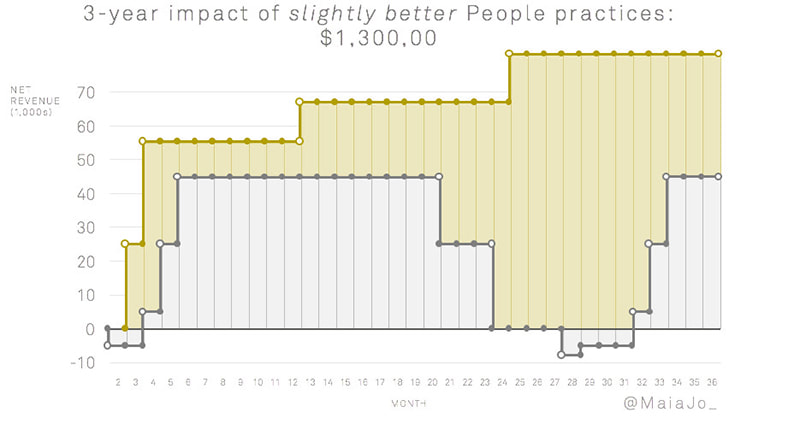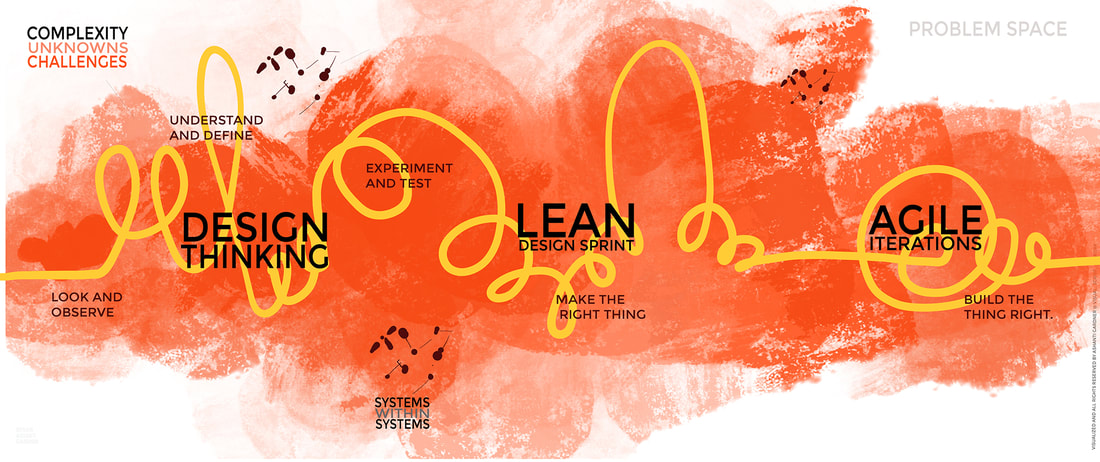|
Guest post by Ashley Preston There is a belief in the business world that almost every employee is replaceable. There are numerous CEOs who will shrug when they hear the staff is struggling with the workload. There are plenty of executives who think that demanding schedules and high expectations will help filter out the mediocre workers and leave only the best ones standing. Those same CEOs watch people leave year after year, either through voluntary or involuntary departures. They regularly make rapid changes with each new worker they bring in – hoping to find the formula that keeps profits growing. They look to hire people who will continue to bring 110% to the table every day. They certainly do not mind when these workers put in the extra time and energy to advance company interests. These CEOs will often put more and more on these new workers’ plates until these employees can no longer handle the workload, and then let them go for being unable to perform like they once did. It happens again and again, and while the company continues to adjust to make room for new people who are still eager to right the ship, they continue to waste time and money trying to perfect a system that is deeply flawed at its core. These companies will continue to hit ceilings that without a knowledgeable, passionate, and energized team, they will never break through. Here is the true cost of employee burnout and high turnover – and what you can do to stop the bleeding before your best talent walks out the door. What it Costs to Regularly Replace Workers Employee turnover is expensive, and the entire team feels it when a superstar leaves the company. Researchers report that the cost of losing an employee costs the company thousands of dollars, and the more important the position, the more it will cost to fill. Hourly workers cost on average $1,500 an employee, including the cost of hiring, onboarding, training, ramp time to peak productivity, loss of customer engagement, and general morale impact. Technical positions cost companies about 100-150 percent of their salary. C-suite turnover costs over 200 percent of the salary to replace and get up to speed. They describe employees as appreciating assets that create more value for the organizations over time. It is estimated that about two-thirds of all sunk costs are intangible, including lost productivity and knowledge. One case study argues that retaining a sales person for three years instead of two, along with better onboarding and management practices, yields a difference of $1.3 million in net value to the company over a three-year period. However, the most substantial impact on turnover is not the cost – it is the damage that it does to your remaining employees. A beloved team member’s departure can have a huge impact on company morale. It leaves holes in team dynamics and can leave other employees asking if they should be looking for a different job too. It does not help when those same employees must take up the extra slack. If the team is already taking on a full workload, they might not be happy to spread themselves so thin. Halting those projects could lead to delayed releases and lost revenue but pushing employees to work harder and more risks employee burnout and even more staff turnover. Employees can spot a toxic work culture from a mile away and will not feel the need to stay loyal to a company that does not feel the need to make improvements. 47 percent of active job seekers cite company culture as the primary reason they left. Companies with high turnover might soon find it difficult to attract top-tier talent after a while too. There are so many ways for current and former employees to review the company and its culture. Earning a reputation as a revolving-door employer will not do you any favors in attracting good candidates. Regardless of the industry, some turnover is just part of business, but keeping good employees happy and productive is the best way to ensure company success. How to Reduce Employee Turnover Researchers say that about 75 percent of all turnover cases are preventable. There are proactive steps you can take to ensure your employees feel seen, valued, and empowered to help the company succeed. Say Thank You Failing to recognize employee achievements and celebrating their successes is one of the fastest ways to burn out your staff. It will make them feel undervalued and make them more likely to disengage from the job. Companies that have strong employee recognition programs have a 31 percent lower voluntary turnover rate compared to companies who do not take the time to say thanks. Leverage employee spotlight programs to highlight a job well done. Take advantage of your company's social media platforms to recognize good employees. Be sure to use rewards as you can – while monetary are always welcome, you can get creative with how you say thanks. What matters is just that you take the time to say thanks. Get Feedback Make sure your employees feel like they have a say. Give them an easy way to provide constructive feedback so they can raise concerns and address issues before they become problems. Thanks to technology, you can use tools like employee engagement surveys to let them share their thoughts anonymously. Keep tabs on your rockstar employees and be sure to check in to see what they like about their position and what you can do to help them further succeed. Be Empathetic Offer employees what they want. Benefits like flexible schedules, remote work, and substantial health insurance packages are major draws for new employees. Nearly 40 percent of employees have left their job for one that offers remote work. Make sure your employees understand you see them as people with lives outside of the office. Being an empathetic employer has major benefits too. Not only will the reputation help you attract better employees, but the employees you already have are more likely to work harder. Nearly 80 percent of employees are willing to work longer hours, and 60 percent of them will accept less pay if they feel like their employer cares about them. Taking care of your employees takes care of business. It is the best way to ensure that you and your entire team can perform to the best of your abilities and create the success you are striving for. If you are struggling right now, contact us to see how to regain control of your company culture, realign your mission, and close any communication gaps you have.
1 Comment
According to Turi McKinley, Executive Director at frog design, “Design thinking is just a fancy name for the creative process.” The ability to think like a designer, through multiple iterations, and learning from the worst failures is the most important skill a leader can have. Design thinking is rooted in empathy and the ability to put the customer or client at the center of the journey. Design thinkers use physical and virtual space to expand and extend their intelligence and are unafraid to try new things. The best design thinkers use visual tools to explore new avenues of value for the business. The executive should be testing and building not just products, but entire worlds. Here are the top four abilities of design thinkers. They can be used to directly address the four problems of business (listed below) and they are so simple you can start practicing them today. 1. Frame (and Re-Frame) the Problem Take a step back, look at it from a different angle. Use multiple lenses and literacies interchangeably. What does it look like as a spreadsheet? A project plan? A to-do list? A GANTT chart? A drawing with Sharpies on butcher paper? Consider the human impact (subjective), the organizational or relational impact (intersubjective), the business or bottom line impact (objective). Ask yourself, “How else might I/we look at this?” Give yourself permission to play, be curious and creative. 2. Enable Experimentation There is no such thing as failure. View everything as an experiment, and you will always get results. If you are always testing and learning, then you will have valuable data that can be reviewed and synthesized into your next launch. Additionally, it stands to reason that results from testing on any target group will carry over to similar users. Design thinking is less of a process and more of a sequence. Model a bias toward making in the business (always be prototyping) and schedule time for this to happen. If it’s not on the calendar, it’s not real. 3. Communicate Your Ideas As a leader, you must come back from (not overcome) the exhaustion, overwhelm, and fatigue. After regaining a sense of clarity and purpose, you must be able to open your mouth and broadcast those big, wild, visionary dreams to the team again and again -- “painting done” until it’s done. Smart leaders know they must do this visually. Think of the coach at the front of the room sketching out the play on the whiteboard. Think of the best PowerPoint presentation you’ve ever seen (OK, I lied, that one doesn’t exist). Think of the first time you were shown how to use a tool or paintbrush. Think of a political speech that moves the hearts and minds of the people. People don’t follow a business, they follow leaders. In most cases, it’s not the leader they’re drawn to, it’s the challenge that the leader is able to articulate. What challenge are you asking your team to help you overcome? 4. Direct the Team The best CEOs lead from the bottom of the pyramid. They know that they will get the results and outcomes they need through other people. Not only are they focused on a succession plan, with at least two people lined up behind them -- mentoring and teaching others what they need to know in order to succeed -- they are encouraging and facilitating collaboration among team members. The team needs to be able to turn toward each other to create tools and solutions in the leader’s absence. They should be equipped with the best resources, given permission to make decisions, given access to “lab” space where they can experiment, and given permission to fail. Demonstrate the process, model the best behavior, show them what you want done, and your team will not let you down. Four Big Problems
And, here are the top problems that business leaders find themselves in. These challenges to growth or innovation can be remedied by directly applying a little visual aptitude (and the abilities described above). 1. Big Picture Paralysis One of our clients told us their strategy felt like “a tumbled bail of rope.” They needed the line to be clear and hanging at the ready. Our job was to lead them through the process of liberating each of their lines of business from snags and knots. Business is complex and messy. And the overload of information can make our brains slow down, or worse, come to a halt. If you’re experiencing this, you may be hearing or saying things like, “I can’t get my priorities in line” or “I don’t even know where to start.” Solution: Reframe the Problem 2. Reliance on Process Sometimes we’re lazy. Sometimes we want to read a book or watch a video and have someone else give us the answers. Sometimes we want to take the easy way out. Unfortunately, in business, there is no proven method or set of instructions to follow. You are not recreating a recipe to prepare that perfect dish you saw on YouTube. You are not creating a piece of clothing from a pattern. Following steps 1-4 will not get you a repeatable outcome. When you are stuck in “step reliance,” you are destined for disappointment and you may be saying things like, “I wish someone would just tell me what to do.” Solution: Enable Experimentation 3. Exhaustion There are many reasons you feel tired. It can be from informational or emotional overwhelm. It could be the strain of mode-switching from the constant pivoting and responding that’s required in your business. It could be that you aren’t managing your time or work effort wisely. Sometimes leaders simply feel oppressed by the unknown -- a sense of uncertainty that is not the invigorating or adventurous kind. For whatever reason, if you are feeling exhausted, pushing through it will never solve the problem. Stop. Walk away. Take a breath. Take a nap or a vacation. Return with clarity and strength. Solution: Communicate 4. Overcontrol Holding on too tightly to the reins of your business will limit collaboration and severely hamper the open sharing of ideas. You might be creating the illusion of collaboration by having meetings where the team brainstorms possibilities only to end up returning to your original thought or argument, saying, “well, we really have to do this” or “I’ve made an executive decision that we will go this way.” If you are focused on control, you may also be too concerned with things like loyalty or team members being “all in” instead of measuring and getting actual results. Solution: Direct the Team Guest post by Jennifer Oppelt Great leaders are thoughtful and deliberate, not impulsive, reactive or demanding. Leaders motivate, encourage collaboration and inspire others to lead. There’s no shame in admitting that you have room to improve as a leader. We all do. The first step is awareness. As an executive, here are some red flags -- indicators on your dashboard -- that will let you know if you are the bottleneck or source of your team's dysfunction. 1. It feels like you’re wasting time in meetings Do you have an objective for the meeting -- a reason to meet or something to accomplish? Has your sales meeting turned into a training/coaching session? Has your weekly standup turned into a festival of grievances? Are you asking for input from the team only to circle back to your original idea or argument? Get a grip on your meeting flow. My husband wrote a book about this. 2. Turnover / Employee Churn Your people aren’t sticking around. It’s an even bigger warning sign if you’re having trouble retaining your top talent. You know what they say about the losing poker hand. If you look around the table and can’t tell who it is, it’s you. There are many reasons why people leave jobs. Their position may lack purpose and fulfillment. Their strengths may be underutilized. Growth opportunities may not be available. Or, they may not align with or respect company leadership. You must take personal responsibility for creating a work culture that is engaging and inspiring. 3. The team is not hitting their goals The team might still look as busy as ever, but there is a decrease in productivity. They might be unclear on the objectives. As Brene Brown instructs, you may need to “paint done” for them. This means providing a high level of visual detail so that the outcome is crystal clear. With a clear vision of the target and the proper words of encouragement, any team can get motivated. 4. People seem to be holding back Your team members used to be filled with brilliant ideas but they’ve stopped pitching them. Your new hires have a certain sparkle that seems to fade once they get into the grind of the day-to-day. Your team is no longer providing feedback, opinions or pushing back against your ideas. They’ve given up or are just saying “I don’t know.” This isn’t normal. If you want a culture of contribution and collaboration you need to listen to your team, make sure they feel valued and incorporate some of their ideas and feedback. 5. You or your team have no work/life balance If you are working 24/7 and you can’t step away from the business to take a week’s vacation, something is seriously wrong. No one likes to think of themselves as a micromanager but that’s exactly what you are if your team can’t make decisions or move projects forward without your constant involvement. Empower your team to lead. Set them up for success with clear expectations and remove obstacles that prevent them from taking ownership. Cross train your team and provide accessible SOPs so that everyone can enjoy time off while the business runs smoothly. Keep an eye on team members' workloads and hire proactively to avoid burnout and costly mistakes from hiring in panic mode. 6. Implementing or sticking to a strategy feels impossible Succeeding without a plan is possible, but not sustainable. You can build the plane as you fly it for a while but things start falling apart when you don’t take time to plan. Constant change and pivots create chaos which leads to confusion and eventually mistrust. The time you spend on creating and onboarding your team to a strategy is a worthwhile investment. With a good strategy you can get clear on team priorities, assign accountable champions and define measurable outcomes that let you know if you are on track.
In my executive coaching groups, I’ve proposed the question, “What is a Visionary Leader?”
The responses vary. Some describe leadership in terms of spatial orientation (“first through the door,” “stand with,” or “servant leader”) while others describe a leadership that is visceral and relational, having more to do with presence than position. Below are some examples of each. It’s possible that, as a leader, you feel more than one of these, or some combination. Regardless, it’s clear that when people describe Visionary Leadership, they think of something greater than themselves -- something that is expansive, inclusive and multi-dimensional. What makes a leader visionary may be their ability to switch between these styles depending on the situation, organization or project. SPATIAL ORIENTATION 1. Leading from above You may be tempted to think of “leading from above” as implying hierarchy (or worse yet, patriarchy). You may think of the traditional, top-down, “command and control” leadership roles of corporations past. However, what I hear when people describe this orientation is that the leader is put on a platform or pedestal by the team. This gives them someone to look up to and also gives the leader line of sight across organizational divides (see Vision below). 2. Leading from below The best CEOs lead from the bottom of the pyramid. They know that they will get the results and outcomes they need through other people. This “servant leader” knows their role is to clear blocks and obstacles for the team in order to keep them motivated and productive. 3. I go first Some leaders want to be the first through the door. They are willing to take the bullet or the hit to prove something to the team. These kinds of leaders might be described as pioneers or trailblazers. They might be the kind of leader who will show the team instead of tell them. These executives -- those leading from the front -- need to occasionally look behind them and make sure the team is still there. 4. Leading from behind The rarest of these is someone who leads from behind. This is the pack-leader wolf who leads her group from the rear, monitoring those at the front, watching for attack from all sides. This type of leader makes sure they have a clear line of sight into the team, its interdependencies, weaknesses and threats. They make it a priority to have the right people in the right seats. 5. Standing with (or alongside) This kind of leadership looks more like advocacy or mentorship. It may be described by others as “handholding” or “propping up” but this orientation puts the leader and team member on equal footing. Don’t confuse this type of leadership with the manager who would rather be your friend than your boss. These leaders show up as a thinking partner, collaborator or a coach. They bring a coaching mindset to bear on each problem, asking the right questions and allowing the team member to be responsible and accountable. 6. Collaboration This type of leadership looks like a circle (or a dance) where the spatial dynamics shift and change with the phases of growth of the group. Traditionally, a circle or council is considered to be a more “feminine” (read: marginalized) model, though movements like Holacracy are attempting to bring these models into the mainstream -- and make the old new again. EMBODIED QUALITIES 1. Vision (Seeing) These leaders are the eyes of the organization, seeing what others can’t. They have an ability to perceive and process large amounts of information, which gives them a birds-eye-view of the business and insight into team dynamics. (See “Leading from above”) 2. Heart (Hearing) These leaders are said to have their “finger on the pulse” of the business. They spend time listening and responding intuitively to subtle changes. They are also said to be the “heartbeat” at the center of the organization that keeps the blood (energy) pumping. 3. Empathy (Feeling) These leaders are described as highly empathetic. They occupy the interpersonal “we space.” They value language and human interaction. Their style is highly relational, emotionally intelligent and communicative. (See “Collaboration”) I’d love to know what Visionary Leadership looks and feels like to you. Please leave your thoughts or insights in the comments. |
Details
ABOUT THE AuthorJoran Slane Oppelt is an international speaker, author and consultant with certifications in coaching, storytelling, design thinking and virtual facilitation. Archives
March 2024
Categories
All
|









 RSS Feed
RSS Feed